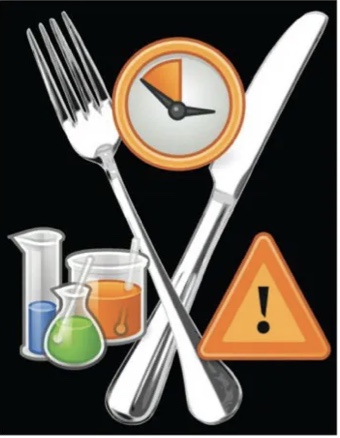In the past I have written about changes in food chain safety and the forces that affect the food we consume. These changes are most often the result
of political and economic powers that influence public policy. With a different approach by the new administration to keeping our food chain safe for consumers, it is important that consumers “Be Prepared” for further changes in food safety regulations:
SNAP Cuts
Summary from the Center on Budget & Policy Priorities July 19, 2017: ” President Trump’s 2018 budget proposes to cut the Supplemental Nutrition Assistance Program (SNAP, formerly food stamps) by more than $193 billion over the next ten years — a more than 25 percent cut — through a massive cost shift to states, cutting eligibility for millions of households, and reducing benefits for hundreds of thousands more. The unemployed, the elderly, and low-income working families with children would bear the brunt of the cuts.
The shift in SNAP benefits to the states amounts to $116 billion in benefit costs. The President’s budget would require states to pay for 25 percent of SNAP benefits (starting at 10 percent in 2020 and increasing to an average state share of 25 percent by 2023), a cost shift of approximately $116 billion over ten years. Since its bipartisan origin, SNAP has operated as a national program with benefits paid by the federal government — a structure that was intended to address the enormous disparity in hunger and poverty across states. Such a cost shift would have significant consequences for states’ budgets. For example, in Texas, 25 percent of SNAP spending (about $1.3 billion per year) is roughly equivalent to the state’s share of the annual salary of 64,000 of the state’s teachers. In Pennsylvania, 25 percent of SNAP spending (about $680 million per year) is more than twice what the state spends on community colleges.
EPA Chief Scraps Scheduled Ban of Pesticide that Harms Kids Brains
Reported by the Environmental Working Group on Wednesday, March 29, 2017 Washington – In one of his first major decisions as Environmental Protection Agency administrator, Scott Pruitt sided with the pesticide lobby over scientists in an eleventh-hour decision to abort the agency’s proposal to ban chlorpyrifos – an insecticide that at small doses can harm children’s brains and nervous systems – from use on food crops.
Pruitt and the Trump administration’s decision ignored overwhelming evidence that even small amounts of chlorpyrifos can damage parts of the brain that control language, memory, behavior and emotion. Multiple independent studies have documented that exposure to chlorpyrifos impairs children’s IQs, and EPA scientists’ assessments of those studies concluded that levels of the pesticide found on food and in drinking water are unsafe.
“The chance to prevent brain damage in children was a low bar for most of Scott Pruitt’s predecessors, but it apparently just wasn’t persuasive enough for an administrator who isn’t sure if banning lead from gasoline was a good idea,” said EWG President Ken Cook. “Instead, in one of his first major decisions as head of the EPA, Pruitt leaped into the warm and waiting arms of the pesticide industry.”
In October 2015, EPA proposed to revoke all uses of chlorpyrifos on food. Late last year, Croplife America – the main trade and lobbying group for the pesticide industry – petitioned the EPA to block the expected ban. In its appeal, Croplife argued that the EPA should disregard the findings of epidemiological studies documenting that the pesticide impaired American children’s IQs and brain development.
Regulatory Accountability Act (RAA)
Reported by the Environmental Working Group on Wednesday, May 17, 2017 Most Americans think asbestos was banned decades ago. But asbestoscaused diseases still kill up to 15,000 Americans a year. Here’s why: the U.S. is one of the few nations in the world where asbestos is still legal. Back in the 1970s Congress passed a law that forced the Environmental Protection Agency to conduct endless studies on any chemical it proposed to regulate, and then charged judges to second-guess the agency’s experts – a classic case of justice denied through delay.
The old law was so bad that Congress finally – and unanimously – passed a new law last year that was, in part, designed to let the EPA regulate or ban toxic substances like asbestos. The bill didn’t go far enough, but everyone, environmentalists and industry alike, agreed that we needed to clear away the roadblocks facing toxic chemical regulations.
Now, just one year later, Congress is about to pass a new law to put the old regulatory hurdles back in place – and not just for asbestos, but for all consumer protection rules.
The so-called Regulatory Accountability Act, or RAA, and similar bills would create an impenetrable gauntlet of studies and reviews that no regulator could ever navigate. This is crazy. No wonder some have dubbed the RAA the “License to Kill” bill.
To keep better informed on food safety and regulatory affairs you can follow these issues on consumer organization web sites such as Consumer Science in the Public Interest (CSPI), The Center on Budget and Policy Priorities or the Environmental Working Group (EWG). It’s important to stay informed if you want to understand what’s happening to our food chain.
Ken Condliff was the founder and self-proclaimed CNO (Chief Nutty Officer) of Nut-tritious Foods located in Vancouver, WA Nut-tritiousFoods.com
Editor’s Note:
The House passed a version of the RAA in January of 2017, but at the time of the writing of this article the Senate failed to take any action on it.






